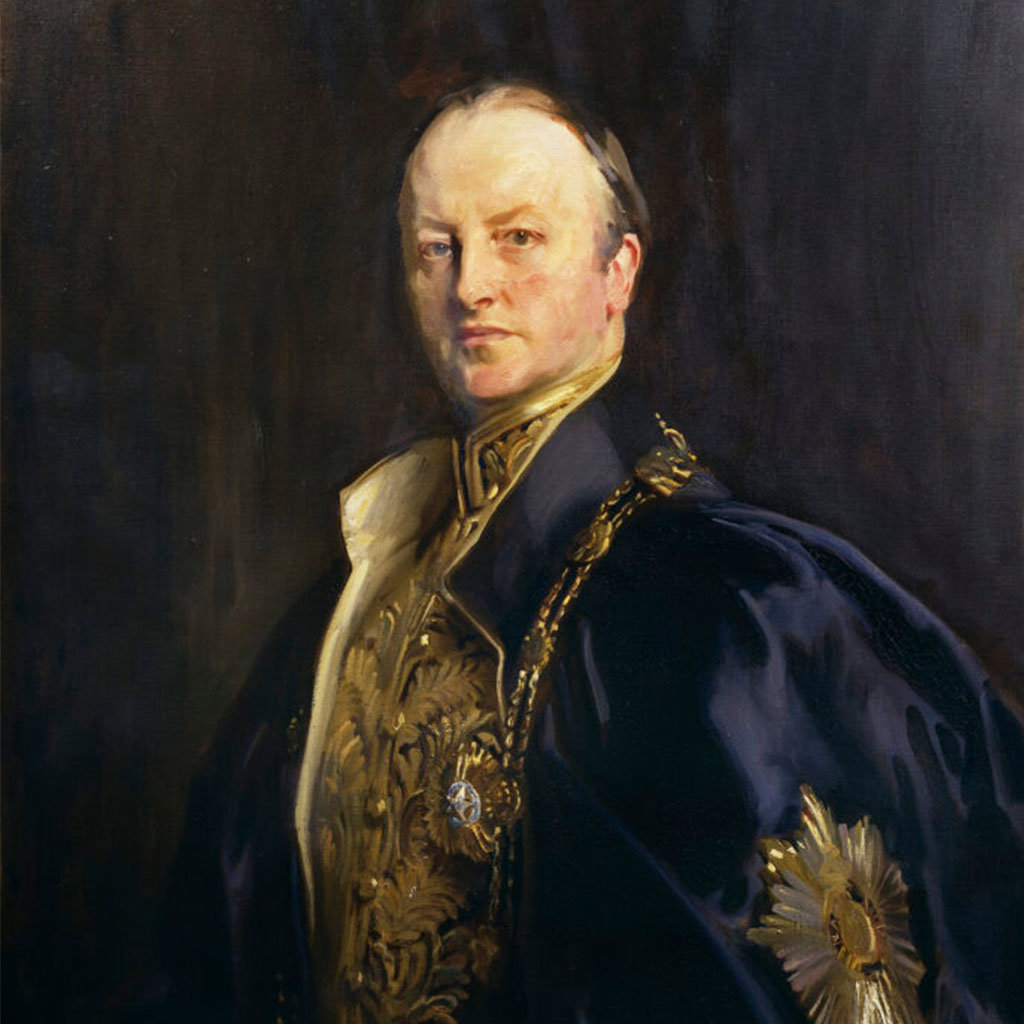George Nathaniel Curzon, Marquess Curzon of Kedleston (1859-1925) was a Viceroy of India, Foreign Secretary, and the President of the Royal Geographical Society who oversaw the acquisition of Lowther Lodge for the Society in 1912. This portrait, commissioned by the Society in 1914, highlights the Society’s historical ties to empire and government.
Having passed through Eton and Oxford, Curzon was elected to Parliament in 1886. There, he carved out a niche for himself as an expert on Asia, particularly the British empire in India. From 1887 to 1895, he travelled the world, including expeditions in the Hindu Kush and the Pamirs.
He published extensively on his travels and on the politics of Asia, always with an eye to how these topics would affect British foreign policy. The Society valued his contributions - he gave his first talk in 1889, joined the Geographical Club in 1890, and was awarded the Patron’s Medal in 1895.
Curzon's role as Britain's viceroy in India
Curzon’s ambition to serve as Britain’s viceroy in India was realised in January 1899. He served in India until late 1905, focusing on a variety of issues including education and labour reform, the restoration of the Taj Mahal, the controversial division of Bengal, and the administration of the Indian army.
His conduct as viceroy has been the subject of extensive debate, with many historians criticising his actions during the famine of 1899-1900, his encouragement of expeditions like Francis Younghusband’s invasion of Tibet (Younghusband was also to serve President of the Society) and his collecting practices (now the focus of ongoing National Trust research linked to Curzon’s family home at Kedleston Hall).
Return to England and the Society
Curzon returned to England to serve in the House of Lords and in various cabinet posts, as well as Chancellor of Oxford University. He also returned to the Society’s Council, was elected Vice President, and, in 1911, became President.
His main focus during his presidency was to secure larger premises for the Society, which he did in 1912 when he spearheaded the purchase of Lowther Lodge for £100,000. His tenure also saw the admission of women as Fellows, a development he had previously opposed.
John Singer Sargent's portrait of Curzon
This portrait, by John Singer Sargent, shows Curzon in the robes of the Order of the Indian Empire. It was commissioned by the Society upon completion of Curzon’s tenure as President in 1914.
Such commissions by the Society were rare. As well as representing Curzon’s sense of his role as an imperial statesman, the portrait expressed the Society’s identification with the culture of empire.

Examining Curzon in the context of empire
Today, Singer Sargent’s portrait serves to highlight Curzon’s role in the making of the Society’s current home, as well as its historical connections with the government of the British empire. Curzon raised funds for Lowther Lodge by soliciting money from Fellows, British and Indian nobility, and prominent businesses, including oil companies.
His travels and political appointments in India and Britain were enabled by Britain’s status as the dominant imperial power in an age of empire. In looking at his portrait, we can ask questions about power, privilege, and representation at the Society, in the past and in the present.
Further readings
Fowler, Corrine and Jeremy Ponyting, editors. Colonial Countryside: An Anthology of Creative and Historical Responses. Leeds: Peepal Tree Press, 2024. See contribution by Masuda Snaith.
Gilmour, David. ‘Curzon, George Nathaniel, Marquess Curzon of Kedleston (1859–1925), politician, traveller, and viceroy of India.’ Oxford Dictionary of National Biography. 23 Sep. 2004
Gilmour, David. Curzon: Imperial Statesman. London: Penguin, 2019.
Goudie, A. S. ‘George Nathaniel Curzon: Superior Geographer.’ The Geographical Journal 146, no. 2 (1980): 203-209.
Manji, Fatima. Hidden Heritage: Rediscovering Britain’s Lost Love of the Orient. London: Chatto & Windus, 2021.
